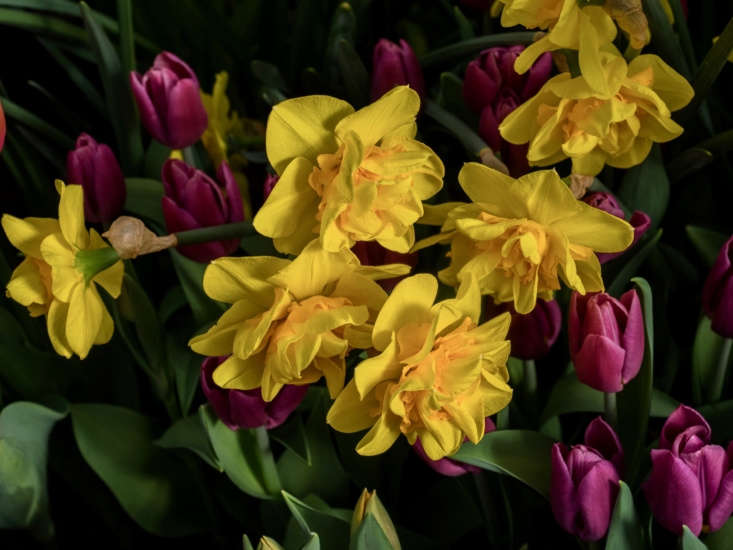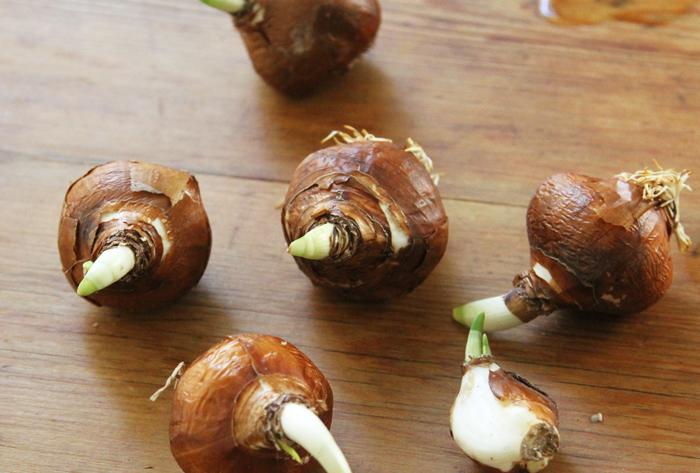Nobody ever says “I should have planted fewer narcissus bulbs” when the flowers start blooming in springtime. With their cheery bobbing heads, these happy harbingers of spring lift your spirits when nothing else in the garden has yet dared to declare victory over winter.
Narcissus—or do you say daffodil?—is one of the most familiar flowers in any garden or supermarket. I defy you to find one person who can’t identify a yellow narcissus (or even a white one). And yet there’s so much more to know. We could spend a week on jonquils alone! Let’s get started, with 10 things nobody tells you about Narcissus:
1. Narcissus and daffodil are the same flower (despite what snobs say).

Daffodil is the common name of Narcissus (a Latin word), and therein lies the daffodil’s image problem. It sounds more highfalutin to invoke Latin. When snobs say they don’t like daffodils, what they may be trying to say is they don’t care for the looks of the big, yellow, common varieties of Narcissus sold in supermarkets. That unloved trumpet flower, by the way, is Narcissus pseudonarcissus.
Read more on this topic in Order the World’s Best Narcissi Online: But Please, Don’t Call Them Daffodils.
2. There are 40 different species of Narcissus—and thousands of varieties.

Jonquils are also narcissi, in case you were wondering. Varieties of the species is Narcissus jonquilla are known for their small, delicate flowers and intense fragrance.
3. You shouldn’t mix narcissus with other flowers in a vase.

Narcissus secretes a sap—visible when you cut the stems—that can be poisonous to other flowers. Wait at least 24 hours before putting cut flowers into a vase with other varieties. But for best results, keep daffodils segregated in their own vase.
4. But you can—and should—mix Narcissus with other bulbs in a garden.

Plant daffodils, tulips, hyacinths, and crocuses together at the edge of a path or walkway. As the flowers bloom in succession, they’ll mask each other’s dying foliage. Because you’re not cutting the stems of Narcissus, they won’t excrete sap to hurt other varieties planted nearby. Bonus: daffodil bulbs repel squirrels and can exert a protective effect on other nearby plants.
5. You should plant Narcissus bulbs in clumps of uneven numbers.

Clusters of uneven numbers of flowers look natural in a garden. Even numbers or straight rows can look skimpy or too symmetrical. Read more in Expert Advice from Old House Gardens: 10 Ideas for Planning a Spring Bulb Garden.
6. The easiest way to force paperwhites is also the best way.

Paperwhite bulbs sold for forcing already have been exposed to cool temperatures for a few weeks to prime them to bloom. They carry all their nutrition in their bulbs; all you need to do is put them in a vase or bowl with a little water to encourage their roots to grow. Don’t drown them (extra points if you put a 1-inch layer of gravel or pebbles in the bottom of the vase).
Read more in DIY: Bottle-Fed Paperwhites.
7. Paperwhite flowers like to get drunk (gin preferred).

As paperwhites grow, they can get leggy (and floppy) unless you take a simple step to prevent the behavior: Get them drunk. Adding alcohol (ethanol) to the bulbs’ water will stunt the growth of stems (by about one-third of their normal height) but not the blooms of paperwhites. Read more in DIY: Get Your Paperwhites Drunk for Better Blooms.
8. You have to plant spring-flowering Narcissus bulbs in autumn.

Narcissus bulbs are like bears: they go dormant in winter. They need weeks or months of cold temperatures to prepare them to grow. When spring sunlight starts to warm them, they’ll emerge from their sleep.
Read more in Foolproof Spring Bulbs for a Beginner.
9. You need to plant Narcissus bulbs pointy-side up.

The flat side of the bulb is where the roots sprout. The point side sends up leaves.
10. Daffodils are one of the easiest spring-flowering bulbs to grow.

Hardy perennials that come back year after year (and even spread—or naturalize—if they’re happy), daffodils are one of the easiest bulbs for a beginner to grow. Happy in a wide range of climates (they grow everywhere in the US except southern Florida), they will greet you with cheery yellow faces in springtime.
Read more growing tips in Narcissus: A Field Guide to Planting, Care & Design in our curated guides to Bulbs & Tubers 101. Read more:
- The Garden Decoder: What Does It Mean to ‘Naturalize’ Bulbs?
- Everything You Need to Know About Ornamental Alliums
- Your First Garden: What You Need to Know Before You Plant Bulbs
N.B.: This post is an update; it was first published January 2019.












Have a Question or Comment About This Post?
Join the conversation (2)